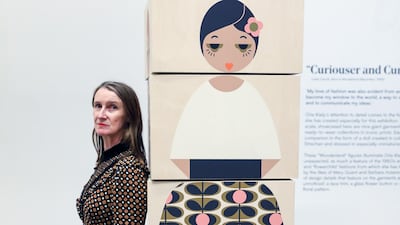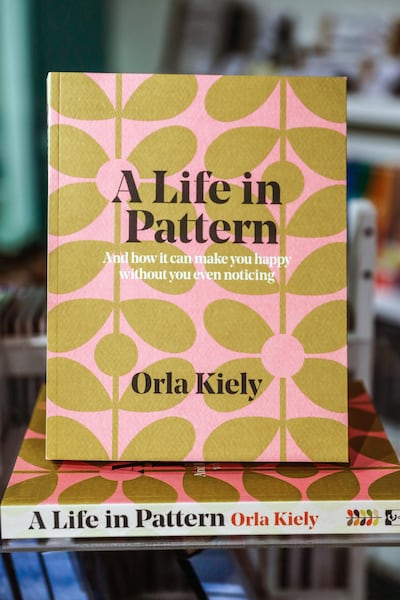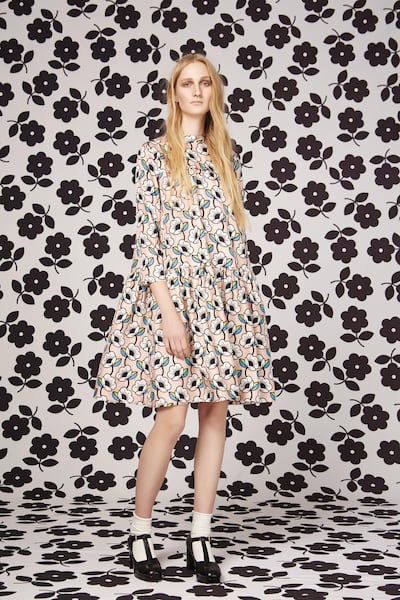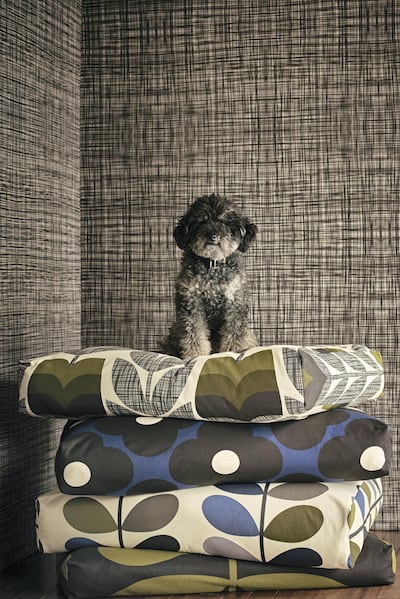We are told that our desire to look for and recognise patterns is hardwired, one of the things that distinguishes us as human. So perhaps this is why the optimistic and ever-so-slightly nostalgic patterns employed by Orla Kiely have become so instantly recognisable over the past 25 years, earning the Irish designer the accolade "queen of print".
Kiely’s aesthetic is dominated by geometric flowers, leaves and the closest thing the designer has to a logo, her endlessly versatile, scalable and variable Stem pattern. Her imprint can be found on her signature handbags, accessories and clothes, stationery and perfume bottles, homeware and furniture, and even on a limited-edition version of the Citroen DS3 car.
In the process, Kiely, who started her professional life as a fabric and wallpaper designer in New York, has created an international fashion and retail business with a level of distinctiveness and recognition more normally associated with the world’s most famous brands.
The business empire, which Kiely runs with her husband, Dermott Rowan, from a small office and two boutiques in London, has not only earned the designer export awards and industry accolades, but she has even been immortalised on an Irish 82-cent stamp, the type most often used for first-class overseas mail.
This year would certainly seem to belong to the 55-year-old, with the publication of a book, Orla Kiely: A Life in Pattern, and a landmark exhibition of the same name at London's Fashion and Textile Museum, which is running until September 23. Kiely will also reflect upon her more than two-decade-long career in a lecture at the Victoria & Albert Museum during the London Design Festival.
For Dennis Nothdruft, curator at the Fashion and Textile Museum, Kiely’s success stems in part from the clarity of her work, the consistency of her approach and the flexibility of her business model, which relies on a series of trusted licensees for all of its manufacturing. “There’s a very strong DNA that runs through everything she produces. She has a process. She absorbs things and then she filters them so that they come out in a very Orla Kiely way that’s all about her vision,” Nothdruft explains.
“She talks about the way she sees the world as repeat patterns, and you can recognise the repetition in her work instantly, which adds a lot of clarity and means you can read an Orla Kiely design immediately. Once you start looking for it, you see it everywhere.” Kiely’s appeal is certainly international. The designer has devoted fans of various ages, from New York to Tokyo, all of whom consume her goods in different ways. “I have a feeling that there is a core customer who probably started with Orla when they were in their 20s, and they’ll continue with her, but she also has a very broad appeal to younger girls through her fashion,” Nothdruft suggests.
“She’s very popular in Asia, because what she does is seen as quite cute in places like Japan and Korea, whereas in New York City it’s seen as contemporary but charming in a way that’s appealing to professional women, who see it as being feminine without being fussy or twee.”
Despite the global reach of her designs, the hues, colour combinations and motifs employed by Kiely remain inextricably linked to her childhood. They reference fabrics, objects and interiors from a particular moment in the 1960s and 1970s that are profoundly domestic. This may explain the atmosphere that's artfully conjured in many of Kiely's advertising campaigns, an aesthetic that's reminiscent of the world depicted by Hanif Kureishi in The Buddha of Suburbia.
For Nothdruft, this is all achieved without resorting to pastiche or nostalgia, and places Kiely in a longer trajectory that arcs from the Arts & Crafts Movement through to the mid-century Modernism of English textile designer Lucienne Day, and the bold, effusive fabric designs of the Finnish company Marimekko. Importantly, at the heart of each of these examples is a holistic approach to design as a way of life, from the small scale of the spoon to the breadth of an entire city as Italian architect Ernesto Rogers once proclaimed, but they are also projects that are inextricably connected with joy.
“I think that gives us a starting point for a discussion of social context, and I think Orla’s work will become a kind of reference for a certain period in time when it’s viewed in 50 or 100 years from now,” the curator explains.
“Her patterns will stand the test of time, and I think they already have. If you look at Stem, it’s been going continually for 18 years or so now.”
Kiely’s visually crisp and geometrically disciplined patterns work across clothes, accessories and homeware. This is combined with a particularly broad appeal, zeroing in on that difficult-to-hit sweet spot of delight, commercial success and aesthetic rigour that’s normally the reserve of articulate, perfectly pitched pop music.
Perhaps it should be no surprise that when Kiely has spoken about her musical preferences in the past, she’s listed contemporary artists such as Feist and Joanna Newsom, as well as classic acts such as Minnie Riperton and Van Morrison.
“Her work has a way of making people feel upbeat,” Nothdruft admits. “It makes them feel safe and comfortable by making references to the past, but it’s certainly not nostalgic.”
It’s been 20 years since Kiely first developed the Stem pattern that has helped to make her business an international success; during this time the designer has taken a remarkably consistent approach to her work, eschewing trends in the fashion cycle in favour of collections that correspond across the decades.
“It’s not about trends; it’s about who she is and what she feels, and that’s why her work is so consistent. That’s also why I don’t think it will go out of date,” Nothdruft suggests. “It’s a look that can keep going because it will keep on adapting.”
___________________
Read more:
Why Thomas Chippendale's craftsmanship and style have never gone out of fashion
From Palestine to America: Taysir Batniji's exhibition shows journey to American dream
MatchesFashion.com launches fashion-forward collection of home accessories
___________________




